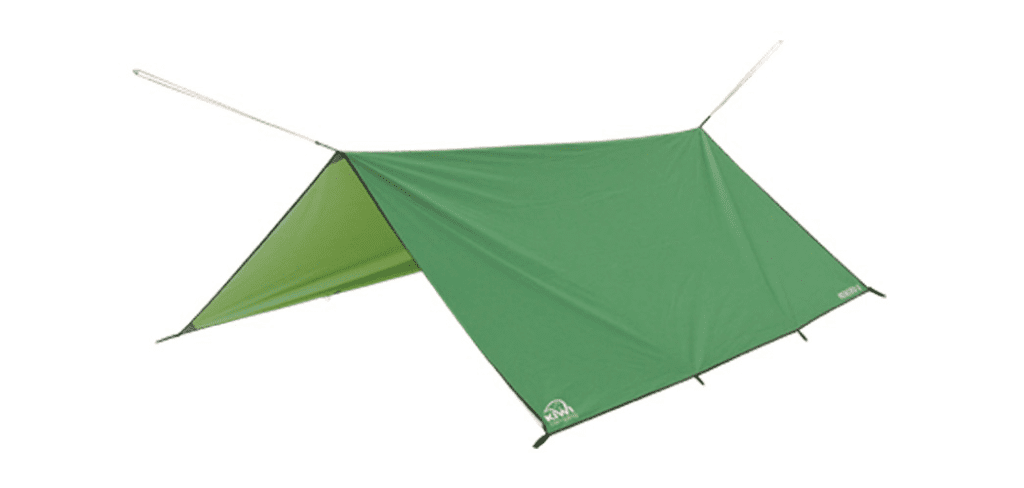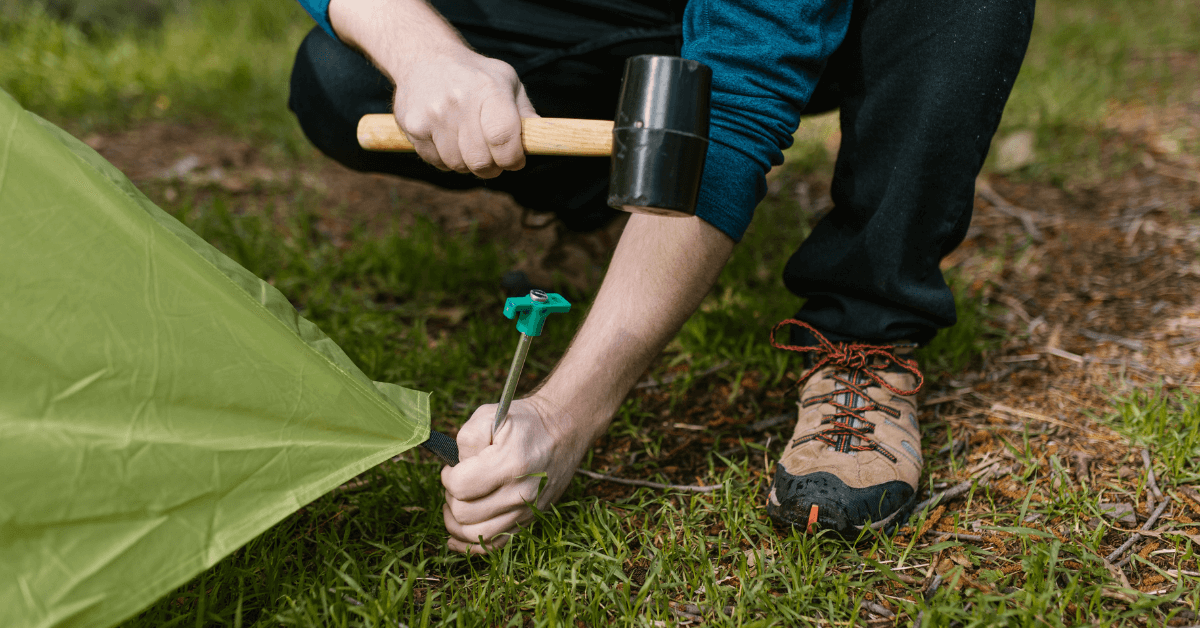Camping is an adventure that requires preparation, and packing the right gear is essential for a successful trip. One of the most important items for camping is a tent, and setting it up correctly is crucial for a comfortable and safe night’s sleep.
Tent stakes, also known as tent pegs, are essential pieces of gear that help to anchor the tent to the ground, ensuring that it remains stable in windy and rainy conditions. However, there are situations where using tent stakes may not be possible, such as camping in rocky terrain or forgetting to pack them altogether.
In these cases, it’s important to have alternative options on hand to secure your tent to the ground. With that in mind, today we’ll explore various alternative options to tent stakes and tent pegs that you can use when setting up your tent.
I’ll provide you with a detailed list of items and tips on how to use them effectively to ensure your tent remains stable and secure. So let’s jump right in.
Reasons why you may need alternatives to tent stakes
While tent stakes are essential pieces of gear for camping, there are situations where using them may not be possible or practical. Here are some common reasons why you may need alternative options to tent stakes:
1. Ground conditions that are not suitable for tent stakes
In some cases, the ground conditions may not be suitable for tent stakes, such as rocky or sandy terrain. Tent stakes require soil that is soft enough to penetrate, and rocky or sandy soil can be too hard or loose for them to be effective. In these situations, you’ll need to find alternative options to secure your tent.
2. Forgot to pack tent stakes or lost them
Another reason why you may need alternative options is if you forgot to pack your tent stakes or lost them during your trip. It’s always important to double-check your gear before heading out on a camping trip, but accidents can happen, and you may find yourself without tent stakes when you need them.
3. Emergency situations
In emergency situations such as a sudden storm or high winds, tent stakes may not be sufficient to secure your tent. You may need to find alternative options to ensure that your tent remains stable and doesn’t get damaged or blown away.
Alternative options to tent stakes and tent pegs
There are several alternative options to tent stakes and tent pegs that you can use to secure your tent. This section discusses some of the most popular and effective options, such as rocks, heavy objects, sand anchors, and tree ties.
1. Rocks
Rocks can be an excellent alternative to tent stakes, especially in rocky or hard ground conditions. Look for rocks that are heavy and flat with smooth surfaces to use as anchors for your tent. Place the rock on top of the tent’s guylines or tie them around the rock and then bury it in the ground to create a secure anchor.
2. Sturdy sticks or branches
Sturdy sticks or branches can be used as alternative options for tent stakes in softer ground conditions. Look for sticks or branches that are straight, sturdy, and at least 1-2 inches in diameter. Sharpen one end of the stick or branch and drive it into the ground at a 45-degree angle to create a secure anchor for your tent.
3. Nails or screws
Nails or screws can also be used as alternative options to tent stakes, especially in hard or rocky ground conditions. Use nails or screws that are at least 6-8 inches long and made of heavy-duty steel. Drive the nail or screw into the ground at a 45-degree angle, leaving enough length above the ground to tie your tent’s guylines securely.
4. Sand or snow anchors
Sand or snow anchors can be used as alternative options for tent stakes in beach or snow camping conditions. For sand anchors, use a sturdy plastic bag or a cloth bag filled with sand and bury it in the sand to create an anchor for your tent. For snow anchors, create a loop with a cord and bury it in the snow to create a secure anchor.
5. Heavy gear or backpacks
In emergency situations, you can also use heavy gear or backpacks as alternative options to tent stakes. Look for heavy items such as water containers, backpacks, or large rocks, and place them on top of your tent’s guylines to create a secure anchor.
Tips for using alternative options effectively

Even though alternative options to tent stakes can be effective, they require different techniques and precautions to use properly. This section provides tips for using alternative options effectively, such as choosing the right materials and properly anchoring your tent.
1. Test the ground before setting up your tent
Before setting up your tent, test the ground to see if it’s suitable for tent stakes or if you need to use alternative options. Walk around the area and feel the ground with your hands or a stick.
If the ground is too hard or rocky, you’ll need to use rocks, nails, or screws to secure your tent. If the ground is too soft, you’ll need to use sturdy sticks or branches.
2. Use the right size and weight
When choosing alternative options for tent stakes, make sure to use the right size and weight. For example, use heavy rocks or backpacks for larger tents or in high wind conditions. Use smaller rocks or sticks for smaller tents or in calm weather conditions. Using the wrong size or weight can cause your tent to collapse or become unstable.
3. Secure the alternative options properly
When using alternative options, make sure to secure them properly to prevent them from moving or coming loose. Tie your tent’s guylines tightly around rocks, sticks, or nails, and bury them deep enough into the ground to create a secure anchor.
For sand or snow anchors, make sure to create a large enough anchor to prevent them from shifting or coming loose.
4. Use multiple anchors
Using multiple anchors can help to distribute the load and prevent any one anchor from becoming overloaded. For larger tents or in high wind conditions, use multiple rocks, sticks, or nails to secure your tent. For sand or snow anchors, use multiple bags or loops to create a larger anchor.
5. Be prepared for emergencies
Always be prepared for emergencies and have backup alternative options on hand. Pack extra rocks, sticks, or nails in case you need to replace a broken or lost anchor. Carry a small shovel to help bury your anchors deep enough into the ground. Having these backups can prevent a small problem from becoming a major disaster.
Precautions to take when using alternative options
While using alternative options for tent stakes and pegs can be a practical solution in certain situations, it’s important to take some precautions to ensure your safety and the safety of others around you. Here are some precautions to keep in mind when using alternative options:
1. Avoid using sharp or dangerous objects
When using alternative options, avoid using sharp or dangerous objects that can cause harm to you or others around you. For example, using broken glass or sharp metal objects can cause injury or damage to your tent. Instead, use rocks, sticks, or other blunt objects that are safe and won’t cause any harm.
2. Be aware of your surroundings
When using alternative options, be aware of your surroundings and make sure that you’re not placing your tent near any potential hazards. For example, avoid placing your tent near cliffs or steep slopes, where a loose anchor could cause your tent to slide or fall.
Also, avoid placing your tent near trees or other objects that could fall on your tent during high winds.
3. Consider the environment
When using alternative options, it’s important to consider the environment and the impact your actions may have on the surrounding area.
Avoid damaging vegetation or disturbing the natural landscape. Use alternative options that won’t cause any harm to the environment, such as rocks or sticks that can be easily removed once you’re done camping.
4. Follow local regulations
Make sure to follow any local regulations or guidelines regarding camping and the use of alternative options for tent stakes and pegs. Some areas may have specific rules or restrictions on what types of anchors can be used or where tents can be placed.
Following these regulations can help to protect the environment and ensure that everyone has a safe and enjoyable camping experience.
5. Practice responsible camping
Finally, it’s important to practice responsible camping when using alternative options for tent stakes and pegs. This means leaving the area cleaner than you found it, packing out all trash and waste, and respecting other campers and their privacy.
By practicing responsible camping, you can help to preserve the natural beauty of the environment and ensure that everyone can enjoy it for years to come.
Related: How To Set Up A Tent Indoors Without Stakes
What Can I Use Instead of Tent Stakes and Tent Pegs – Final Thoughts
Some alternatives to tent stakes and tent pegs include rocks, heavy objects, sand anchors, tying your tent to trees, and using guy lines. However, it’s important to consider the specific needs of your camping situation and take necessary precautions to ensure safety and minimize environmental impact.
Whatever option you choose, it’s important to use it safely and responsibly. Be aware of your surroundings, consider the impact of your actions on the environment, and follow any local regulations or guidelines. By doing so, you can ensure that you have a safe and enjoyable camping experience while minimizing your impact on the environment.
In addition to alternative options, it’s also important to have a backup plan in case your primary stakes or pegs fail. This could include carrying extra stakes or using guy lines to secure your tent in case of high winds.
